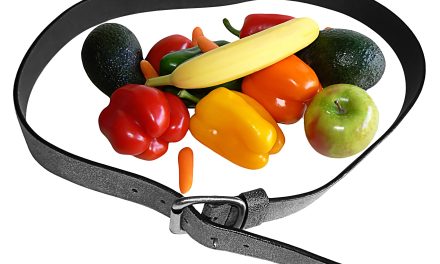Wondering how much weight loss is noticeable to others can be a common concern in anyone’s weight loss journey.
Changes in appearance become noticeable when body weight shifts significantly enough to catch the eye.
Research suggests that noticeable changes in facial appearance generally occur after losing or gaining about 8 to 10 pounds.
Being conscious of how weight loss is viewed can also impact motivation and satisfaction.
For many, the perception of progress can boost self-esteem and encourage continued health efforts. This journey enhances not just physical appearance but also overall well-being.
Building a balanced approach that includes proper diet and exercise is key to achieving noticeable and healthy changes.
With dedication and informed habits, anyone can make subtle yet significant shifts in their body weight, leading to a positive impact on both appearance and health.
Key Takeaways
- Noticeable facial changes occur after losing about 8 to 10 pounds.
- A balanced approach to diet and exercise helps achieve noticeable results.
- Understanding perception can motivate and support weight loss goals.
Understanding Weight Loss
Weight loss involves complex processes that extend beyond simple dieting. It encompasses the impact of metabolism, genetics, and body composition on how individuals shed pounds.
The Science of Shedding Pounds
Weight loss mainly occurs when the body burns more calories than it consumes. This is often achieved through a combination of diet and exercise.
The body uses stored fats for energy, leading to fat loss, which changes body composition. Metabolism plays a crucial role, as it dictates how efficiently the body converts food into energy.
Genetics can also influence weight loss. Some individuals may naturally have a faster metabolism or a body composition that favors lean muscle mass.
Increasing muscle mass can enhance metabolism since muscle tissue burns more calories than fat, even at rest.
Factors Influencing Weight Loss
Several factors affect weight loss, including age, diet, activity level, and genetics.
Younger individuals may lose weight more quickly due to higher metabolic rates. A balanced diet rich in nutrients supports healthy fat loss and maintains muscle mass.
Regular physical activity is vital, as it helps burn calories and can prevent muscle loss during weight loss. Genetics and hormones also play essential roles.
Some people might store fat more easily due to genetic predispositions, affecting their ability to lose weight. Understanding these factors can help tailor effective weight loss strategies.
Health and Weight Loss
Losing weight can greatly affect a person’s health. It can improve physical well-being and help manage or prevent various health conditions. This section explores how these changes benefit overall health and address specific health concerns.
Impact on Overall Health
Achieving a healthy weight can lead to numerous health benefits. Reducing body weight by even a small amount, such as 5-10%, can help lower blood pressure, improve cholesterol levels, and decrease the risk of heart disease.
This can be particularly beneficial for those with cardiovascular issues or a history of heart problems in their families.
Weight loss can also enhance mental well-being. Shedding extra pounds often boosts self-esteem and reduces symptoms of anxiety and depression. Improved physical health can lead to a more active lifestyle, which further supports mental health and increases energy levels.
Weight Loss and Health Conditions
Weight loss plays a significant role in managing health conditions like diabetes and thyroid disorders.
For individuals with type 2 diabetes, losing weight can improve blood sugar control and sometimes lead to a remission. Maintaining a proper diet and nutrition is crucial in managing these conditions effectively.
Thyroid issues also benefit from maintaining a healthy weight. Proper weight management can relieve symptoms and improve thyroid function.
Losing excess weight can reduce strain on the body, making it easier to regulate hormone levels.
People with obesity are at higher risk for various diseases. Weight reduction can lower the likelihood of developing conditions such as hypertension, non-alcoholic fatty liver disease, and certain types of cancer. Make informed dietary choices and seek regular medical advice for optimal health.
Diet and Nutrition
Maintaining a healthy weight relies on sensible eating habits and understanding the role of caloric intake. The right diet focuses on nutritious foods and creating a manageable energy deficit. These key strategies help achieve sustainable weight loss.
Choosing the Right Foods
Whole foods are crucial for weight loss and include vegetables, fruits, lean proteins, and whole grains. These foods are rich in nutrients and help increase satiety. Processed foods, often high in sugar and unhealthy fats, should be limited.
Avoiding a fad diet is important as they often promote unrealistic and unsustainable eating patterns. Instead, find a balance that includes a variety of food groups. Planning meals with these principles supports lasting health benefits and weight control.
Caloric Intake and Deficit
A crucial aspect is balancing caloric intake with physical activity.
Calculating daily calorie needs can help in creating a caloric deficit, leading to weight loss. For sustainable results, a daily deficit of 500-1000 calories is recommended, equating to about 1-2 pounds of weight loss per week.
Exercise supports this process by increasing calorie burn and boosting metabolism.
Combining diet and exercise ensures that the body receives necessary nutrients while working towards weight loss goals. This balance helps avoid muscle loss and promotes overall well-being.
Exercise for Weight Loss
Exercise plays a crucial role in weight management by helping to burn calories and improve fitness levels. It boosts energy and can complement dietary changes to enhance weight loss efforts.
Types of Physical Activity
There are various types of physical activity that can aid in weight loss. Aerobic exercises, such as walking, running, and cycling, are effective for burning calories.
High-intensity interval training (HIIT) is another approach that alternates between intense bursts of activity and rest, maximizing calorie burn in a short amount of time.
Incorporating these exercises into a routine can significantly increase energy levels and contribute to a healthier lifestyle. Consistent physical activity can also improve heart health. It’s important to find enjoyable activities to ensure long-term commitment.
Strength Training and Cardio
Strength training involves using resistance to build muscle mass, which can enhance metabolism since muscle tissue burns more calories at rest than fat tissue. Exercises like weight lifting or using resistance bands are common forms.
In contrast, cardiovascular exercises focus on raising heart rate to burn calories and improve cardiovascular fitness. Activities such as jogging, swimming, or using a stair climber are effective examples.
Combining both strength and cardio exercises in a weekly routine can be particularly beneficial. This mix helps maintain muscle mass while ensuring a high level of calorie expenditure, which supports weight loss goals.
Measuring Weight Loss
Weight loss can be assessed through various methods, each offering unique insights. Understanding these methods can help individuals track progress effectively and make informed decisions about their health journey.
Quantifying Changes
When it comes to quantifying weight loss, different measurement methods can be utilized.
Tracking changes in body weight using scales is a straightforward approach. Regularly weighing oneself at the same time of day can provide consistent data. Additionally, some may use clothes fitting differently as an indicator of weight loss.
For more detailed monitoring, technology like smart scales can offer insights into body composition, tracking factors such as fat percentage and muscle mass. These metrics can be valuable for those aiming to understand changes beyond just weight.
Observing these changes over time can provide a clearer picture of progress and help motivate continued efforts.
Understanding BMI
Body Mass Index (BMI) is a common tool used to assess whether an individual is within a healthy weight range. It is calculated by dividing a person’s weight in kilograms by the square of their height in meters.
While BMI provides a numerical value, it has limitations.
BMI does not account for muscle mass or fat distribution and may not accurately reflect health for those with higher muscle content. Despite its limitations, BMI can serve as a general guideline for identifying potential health risks. It is often used in conjunction with other measurements to create a fuller understanding of an individual’s health. Understanding where one stands in the BMI range can inform lifestyle and dietary choices.
Perception of Weight Loss
Weight loss becomes noticeable at different points for everyone. It often depends on factors such as body size and shape, personal perception, and feedback from others. The way clothes fit can signal weight changes, as can comments or validation from external sources.
External Views on Weight Changes
External validation can be a significant indicator of noticeable weight loss. People often receive comments from friends or family when weight changes start to show.
These observations usually focus on areas such as the face, where facial adiposity changes quickly. Additionally, clothes fitting differently can be an obvious signal. Loose clothing often provides the first hint to wearers and those around them.
A study found that long-term weight maintenance often includes external motivators like comments or compliments. These reinforce the positive effects and help sustain motivation. While some find this encouragement helpful, others may prefer to rely on personal metrics to measure success.
Self-Perception and Confidence
Self-perception plays a crucial role in how noticeable weight loss feels to an individual. Many people report feeling more confident when they perceive their weight loss.
This internal boost often leads to greater motivation and persistence in maintaining a healthy lifestyle. The feeling of clothes fitting differently can contribute significantly to this enhanced confidence.
People might notice aspects like improved energy levels before physical changes. Interestingly, self-perception doesn’t always align with external views. Some might feel significant changes even if others do not comment. This highlights the importance of self-awareness in understanding one’s progress.
Challenges and Considerations
Achieving noticeable weight loss can be intricate due to various factors such as plateaus and setting realistic goals. Individuals often face hurdles like temporary weight stalls and misunderstandings about what healthy and sustainable weight loss entails. Understanding these challenges is essential for navigating the weight loss journey effectively.
Dealing with Plateaus
Weight loss plateaus are common and can be frustrating. During these periods, the scale seems stagnant despite continued efforts.
Often, this occurs because the body adapts to a new routine or calorie intake.
Quick weight loss, often associated with rapid water weight, can initially be motivating but isn’t sustainable. To overcome a plateau, it’s crucial to reassess calorie needs, nutritional intake, and physical activity levels.
Changes like incorporating strength training or varying exercises can help break the plateau.
Sometimes adjusting dietary choices by focusing on nutrient-dense foods aids in progress. Measuring success by clothing fit instead of solely scale numbers can offer encouragement during plateaus.
Patience and persistence are key to moving past these challenging episodes while maintaining the motivation to continue working toward long-term goals.
Managing Expectations
Setting realistic expectations is crucial for sustaining healthy weight loss. Many individuals seek rapid weight loss due to cultural pressures, but this often leads to disappointment.
Unrealistic goals, such as losing significant weight in a short time, can cause frustration when progress doesn’t meet expectations.
Instead, focusing on sustainable changes is more effective. Gradual weight loss, typically 1-2 pounds per week, is healthier and more maintainable. This approach helps preserve muscle mass and supports overall well-being.
Assessing progress by considering changes in clothing fit rather than just numbers can provide a more holistic view. Understanding the difference between water weight and fat loss can further clarify realistic outcomes.
Setting achievable goals encourages a positive mindset, reducing the risk of giving up.
Frequently Asked Questions
Weight loss becomes noticeable at different stages for different people. It can manifest in various ways, such as changes in facial structure or clothing fit. This section explores when and how these changes can be perceived.
At what point do you start seeing weight loss?
Weight loss is often noticeable after losing about 5-10% of body weight. For someone weighing 200 pounds, this might be 10-20 pounds. This varies based on body type and initial weight.
What are the indicators that you are losing weight, even in small amounts?
Indicators can include looser clothing, a feeling of increased energy, and subtle changes in body measurements. Some may notice improved sleep or reduced joint pain, which are also signs of weight loss.
How does weight loss manifest visually in women?
In women, weight loss often appears first in the face, waist, and thighs. These areas might show slimming effects sooner than other parts of the body.
How much weight do you have to lose before it’s noticeable in your facial features?
Facial changes are often noticeable after losing about 3-5 pounds. This can vary, depending on the individual’s face shape and composition.
What is the threshold of weight loss that might be cause for concern?
Losing more than 1-2 pounds per week consistently can be a concern if not done under medical guidance. Rapid weight loss might indicate health issues and should be discussed with a healthcare provider.
How does significant weight loss, like 50 pounds, affect your appearance?
Losing 50 pounds can lead to dramatic changes in appearance, affecting body size, skin elasticity, and posture.
This amount of weight loss might alter clothing size significantly and can have psychological impacts, both positive and challenging.


























